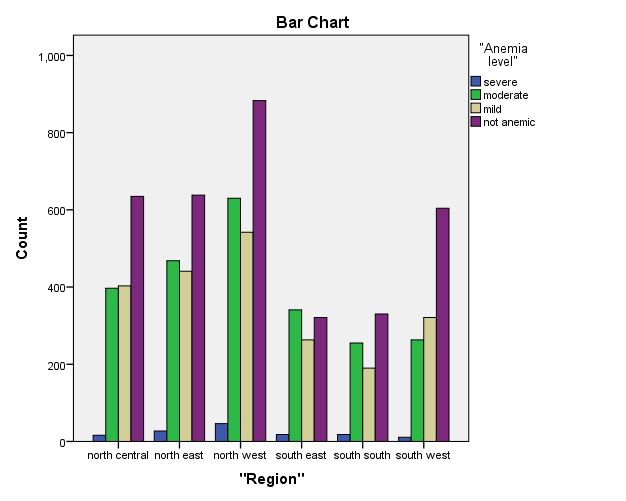Evaluation of anemia determining factors among children in Nigeria using multinomial logistics regression
Keywords:
Anemia level, red blood cells, children, Stepwise, multinomial logisticAbstract
Anemia is a disorder characterized by insufficient hemoglobin or red blood cells that affects the blood's ability to carry oxygen, which can cause weakness, exhaustion, and other health issues. It is a serious public health concern in Nigeria that affects children under five years old, impeding their growth, immunity, and vulnerability to diseases. This study evaluates factors influencing anemia levels amidst Nigerian children under the age of five years using data from the Nigeria Demographic and Health Survey (NDHS), covering 8,061 observations. The study examined levels of anemia as the dependent variable, socio-demographic factors such as maternal age, region, residence type, education, wealth index, among others as independent variables. Stepwise logistic regression selection procedure was used to identify significant predictors. The Chi-square tests of association, independence and multinomial logistic regression were used to assess the existence of association, independence and influence of these variables on anemia levels respectively. Variables such as educational level, wealth index and residence type are major determinants of anemia level in children below the age of five years. Children whose parents are without formal education were more prone to severe anemia, compared with children whose parents are formally educated. Children from urban areas have a lower likelihood of contracting moderate anemia compared to their rural counterparts. Also, the parents' wealth index is significantly associated with mild anemic levels in children below the age of five years with respective odds of (1.424, 1.376 and 1.252) for the poorest, poorer and middle-wealth index parents compared to the richest The study, therefore, concludes that education, economic status, and types of residence are significant determinants of anemia levels. It recommends enforcing basic education for parents, improving the wealth index and living in urban areas to reduce the prevalence of anemia among children under the age of five years in Nigeria.


